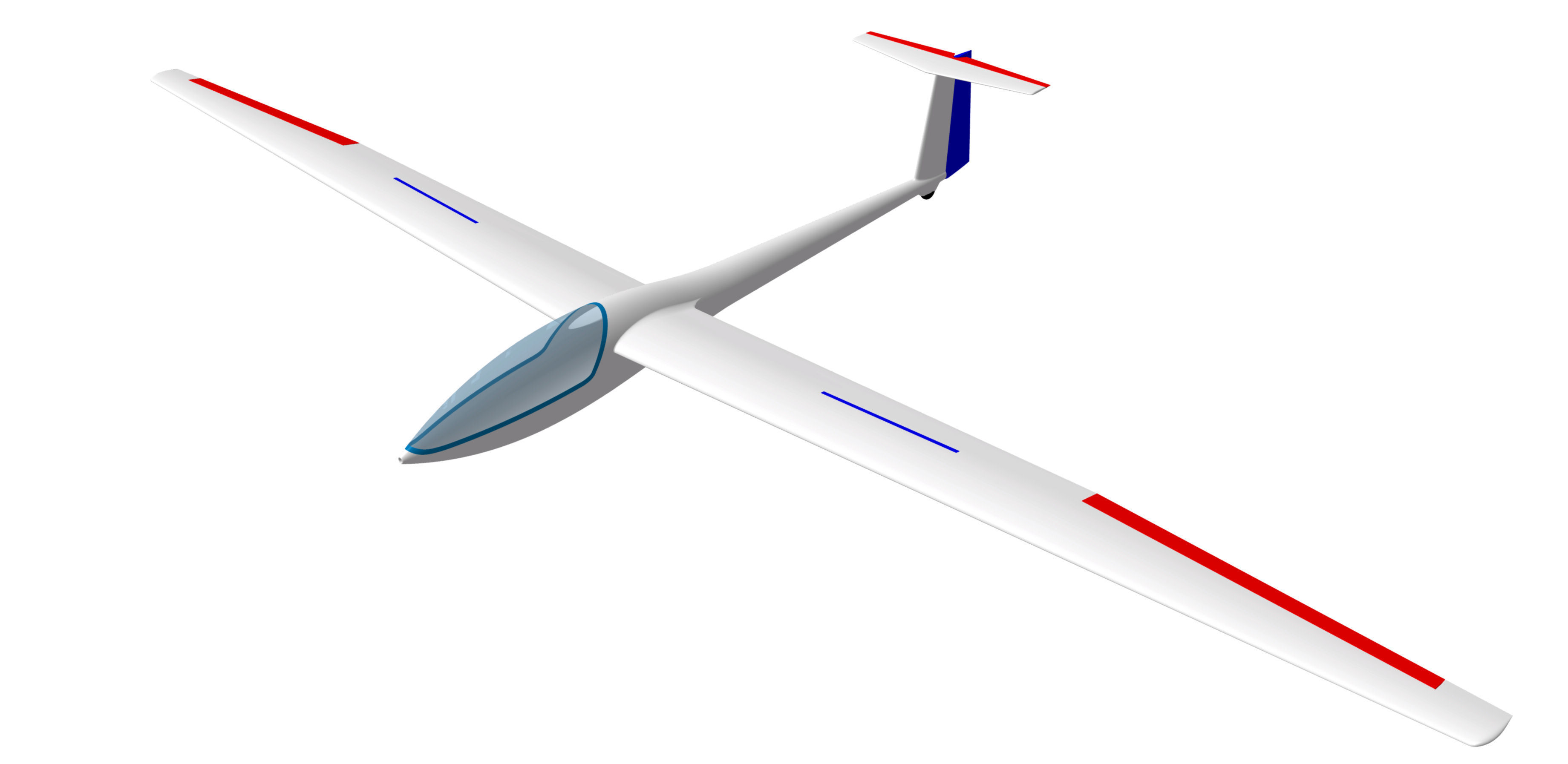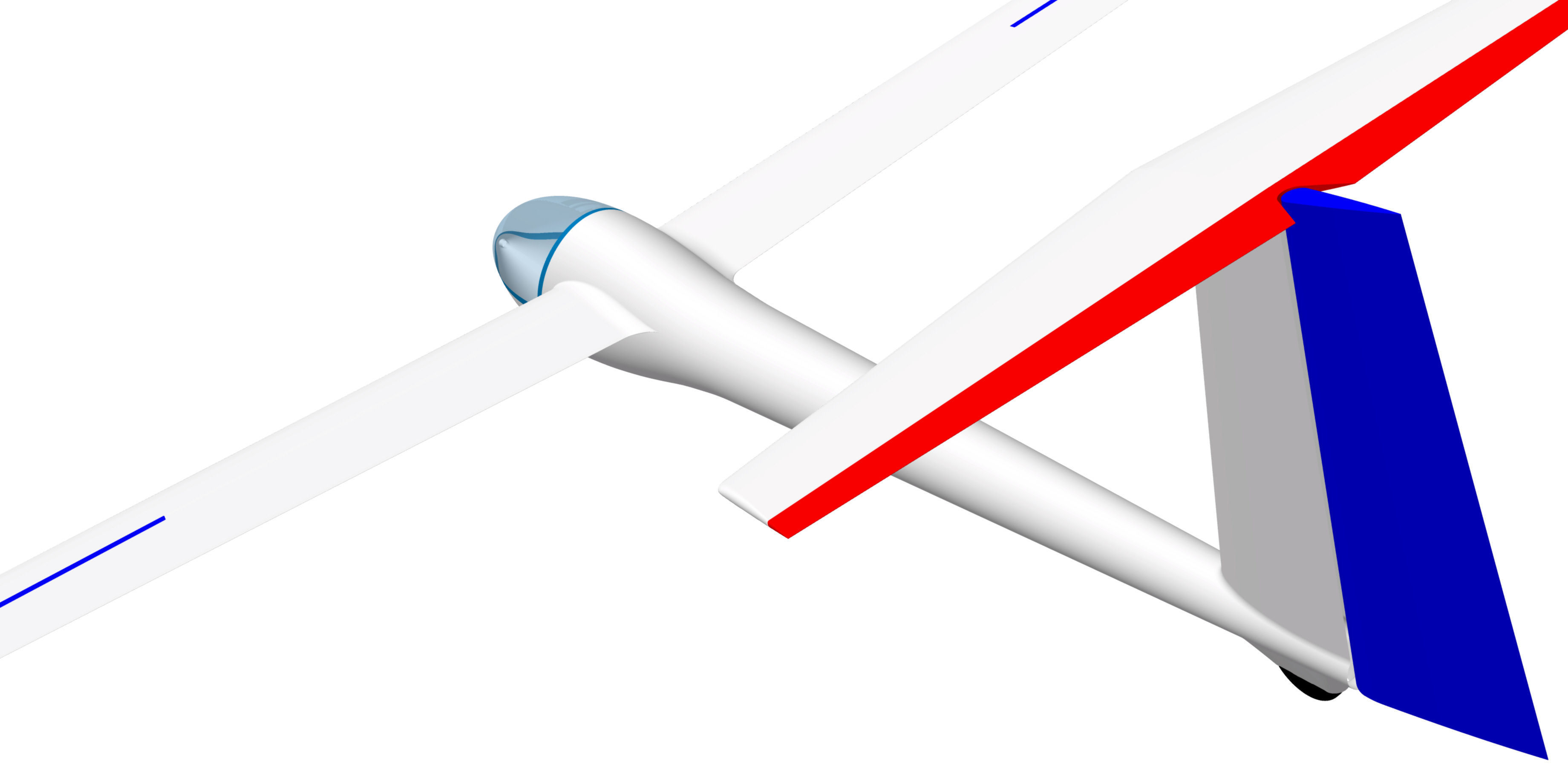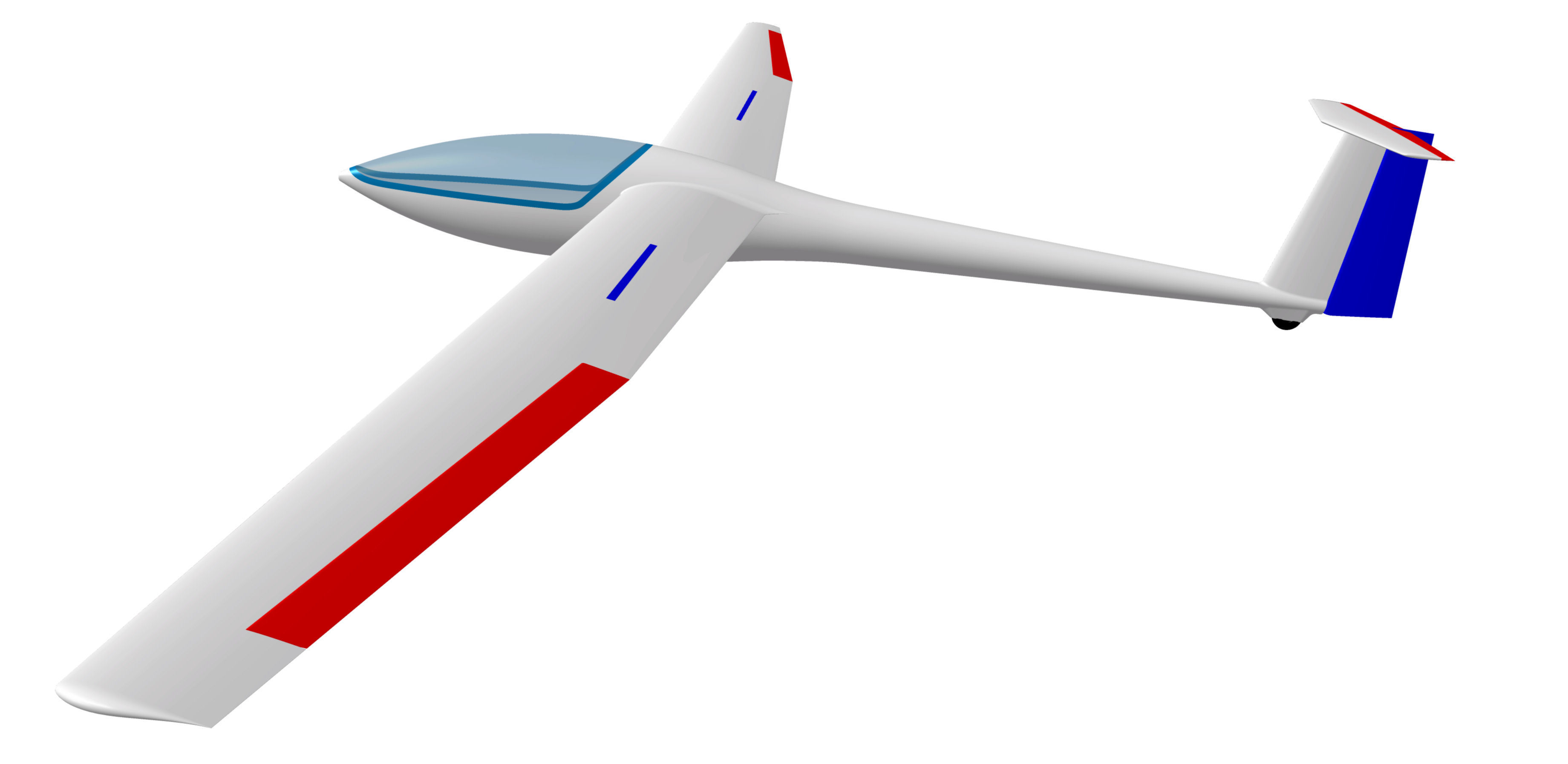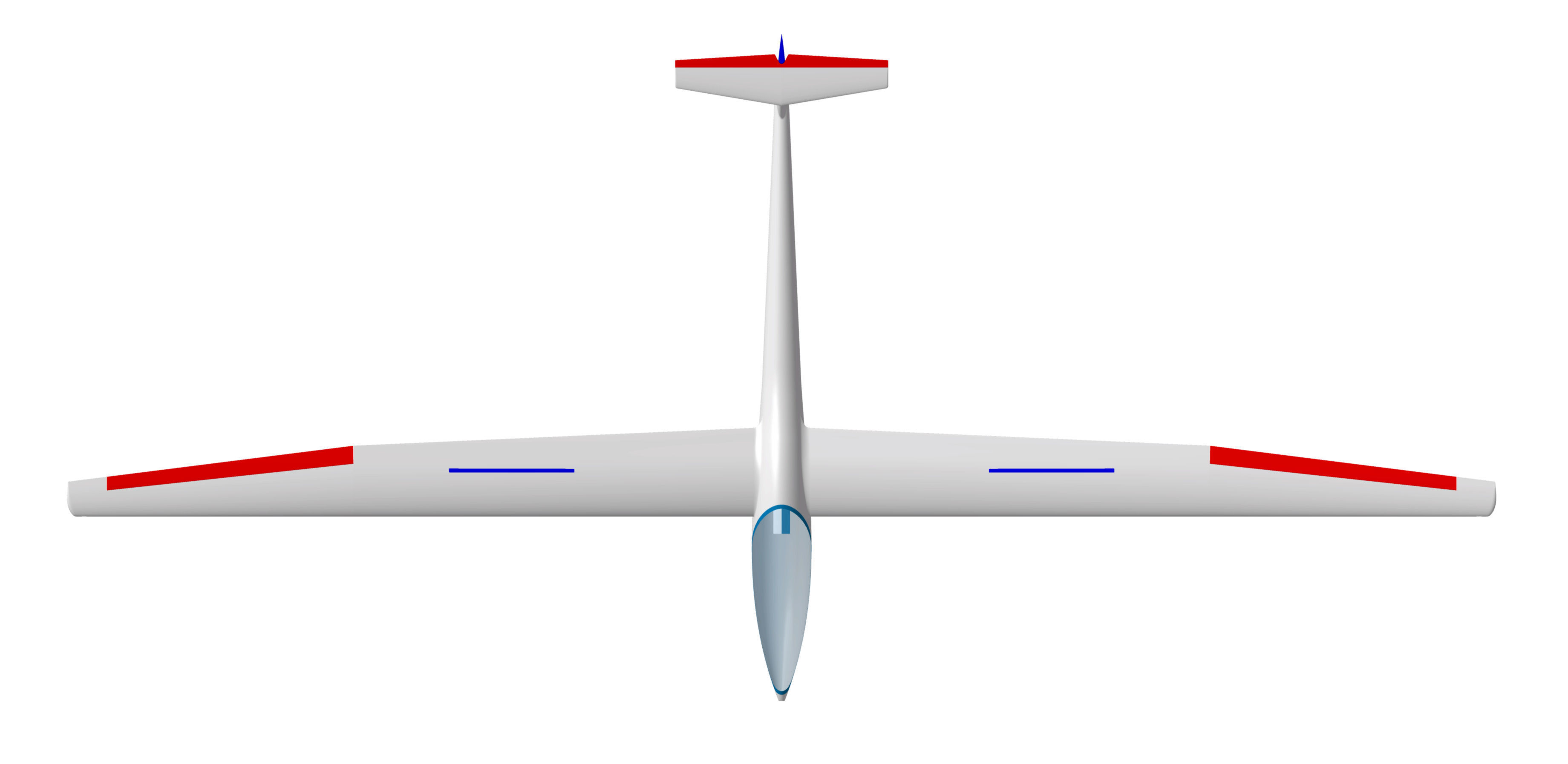
Glaser-Dirks DG-100 3D print model
The Glaser-Dirks DG-100 of 1974 is the first sailplane manufactured by Glaser-Dirks, developed from the Akaflieg Darmstadt D-38, the Standard class sailplane was designed by Wilhelm Dirks.The first model had an all-flying tailplane, with anti-balance tabs along the entire trailing edges, and a two-piece canopy (movable and fixed parts), built of GFRP (glass-fibre reinforced plastic)/foam sandwich materials and resin impregnated rovings for high strength parts. Successive developments included the DG-100G, DG-101 and DG-101G. Most models are available with water ballast bags in the wings.
The DG-101 and DG-101G had improvements such as a single-piece front-hinged canopy, improved crash resistant cockpit and a conventional tailplane (with fixed horizontal stabilizer and articulated elevator). There was also a club version of this sailplane with fixed landing gear. All models featured top-surface-only air brakes.
Although these gliders were designed in the 1970s, they are still popular in the Club class and remain competitive in Sports class contests.
General characteristicsCrew: One pilotCapacity: 100 kg (220 lb) water ballastLength: 7.00 m (22 ft 11.75 in)Wingspan: 15.00 m (49 ft 2.5 in)Height: 1.4 m (4 ft 7 in)Wing area: 11.0 m2 (118.4 sq ft)Aspect ratio: 20.5:1Empty weight: 230 kg (507 lb)Gross weight: 418 kg (921 lb)
PerformanceMaximum speed: 260 km/h (161 mph, 140 kn)Maximum glide ratio: 39:1Rate of sink: 0.59 m/s (116 ft/min)
This 3D model is 1/1 scale of the plane. (Setting into bespoke scale can be done upon request.)
3D model is accurate surfacing of external shape and it contains:
- Fuselage
- Canopy Frame
- Canopy Window
- LH/RH Gear Door Closed/Open
- LH/RH Wing
- LH/RH Spoiler
- LH/RH Aileron
- Horizontal Stabilizer
- Elevator (neutral / extreme positions)
- Rudder (neutral / extreme positions)
- Landing Gear











